
 |
|
|
|
#1
|
||||
|
||||
|
Been awhile since I've been able to tinker with the T-16 due to other projects. Over the summer I'd had some issues with the engine seeming to flood while under a load. It would start, idle and rev fine but driving up hill in 95-105 degree heat once warmed up caused problems. The engine would choke down and applying more throttle in an attempt to increase power would have the opposite effect. Did some research and found things related to my issue on some of the rat-rod sites. Long story short it would appear my fuel pump was providing too much pressure for the carburetor and flooding it while running. Reasons could have included the length of the lift rod that operates the fuel pump, the lobes raising the lift rod, the thickness of the gaskets under the fuel pump and manifold, and the length/tension of the spring in the fuel pump. To compensate for too much pressure, you have to get into the carburetor which still wouldnít be a guarantee of anything.
And for whatever reason, the factory WWII fuel pump delivers 4psi and the carburetor is designed for 3.5psi. Maybe not an issue with everything spot on but just one more concern when things arenít working as planned. After a lot of experimenting and testing different configurations, I decided to try some modern accessories. Figure I could always take them off. Plus I was looking for a solution to the heat saturation that can affect the fuel pump on Fordís where it is mounted high in a closed environment as on the T-16. So in an effort to keep things visually correct, I put all of the goodies inside the locker above one of the fuel tanks. Essentially ran rubber lines into the locker and up to an electric fuel pump. Added an in-line fuel filter which then leads to a Holley fuel pressure regulator set to 3.5psi. Then back out of the locker and connects back to my metal lines between the locker and fuel tank. From there it goes through the rest of the system as normal. I removed the lift rod from under the original fuel pump and the fuel simply is pushed up the lines and through it when everything is running. The little black box contains a fusible link and an idiot light along with a manual override switch. This way if the light is on, I know the fuse is good and power is on at the instrument panel. Flipping the switch will disable the electric fuel pump in the event that I need to crank the engine to clear it out and donít want fuel. So far everything works great. Ran the carrier up and down the street yesterday. Started off in 2nd and needed to shift to 3rd while accelerating uphill within a few feet. It now has the performance of a regular vehicle as it should. As it now stands, I may just leave it this way. 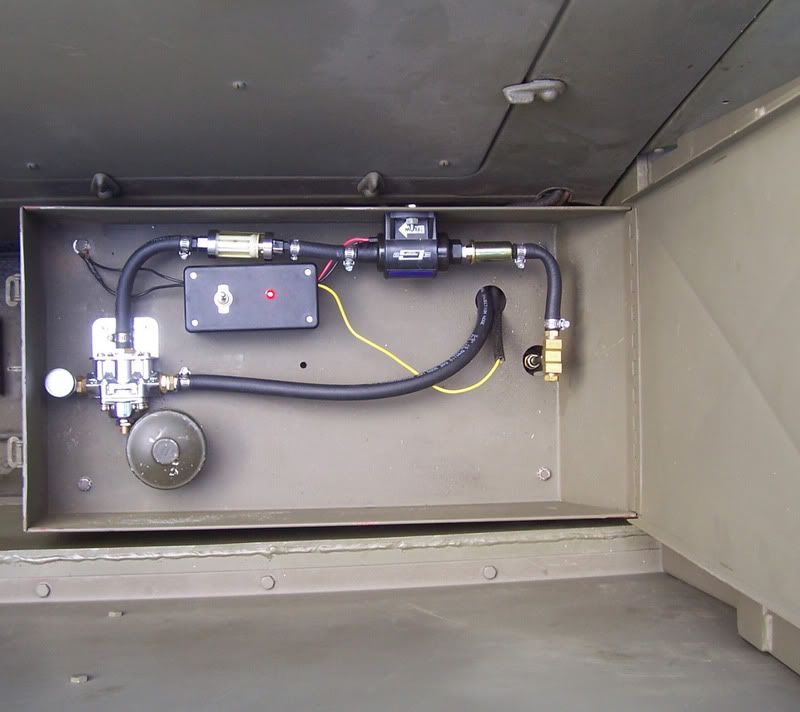
__________________
David Gordon - MVPA # 15292 '41 Willys MB British Airborne Jeep '42 Excelsior Welbike Mark I '43 BSA Folding Military Bicycle '44 Orme-Evans Airborne Trailer No. 1 Mk. II '44 Airborne 100-Gallon Water Bowser Trailer '44 Jowett Cars 4.2-Inch Towed Mortar '44 Daimler Scout Car Mark II '45 Studebaker M29C Weasel |
|
#2
|
||||
|
||||
|
Since we're talking about rusty projects on a few other message threads, I figured I should post some of the shots showing how we chemically striped my carrier hull. All the welding work that is shown earlier in this message thread was completed before I had the hull dipped. Figure that was best with all the sheet metal I was replacing, holes to be welded up and then British wartime features being added back on. That way it could be primed after dipping and I wouldn't be grinding or burning paint off later on with new body work.
All of the armor is original and only light sheet metal areas inside the hull over the tracks was replaced with new metal. But old and new looks the same in the final shots. I also branded it "Tetanus" at that time due to the amount of rusty metal we had. 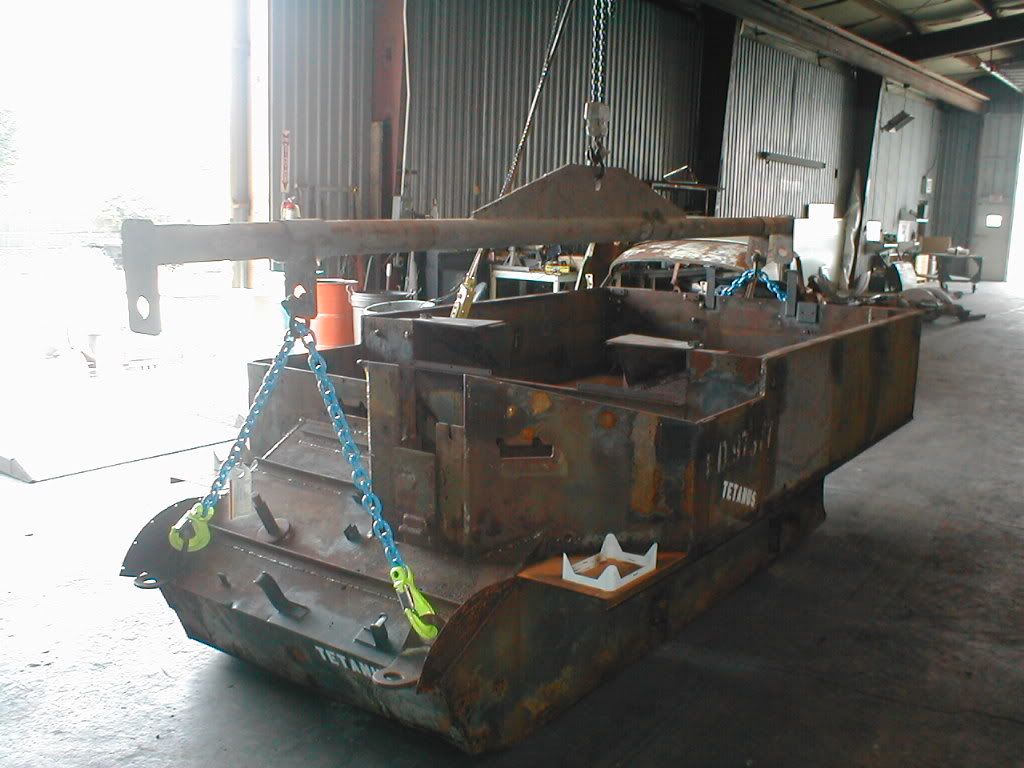 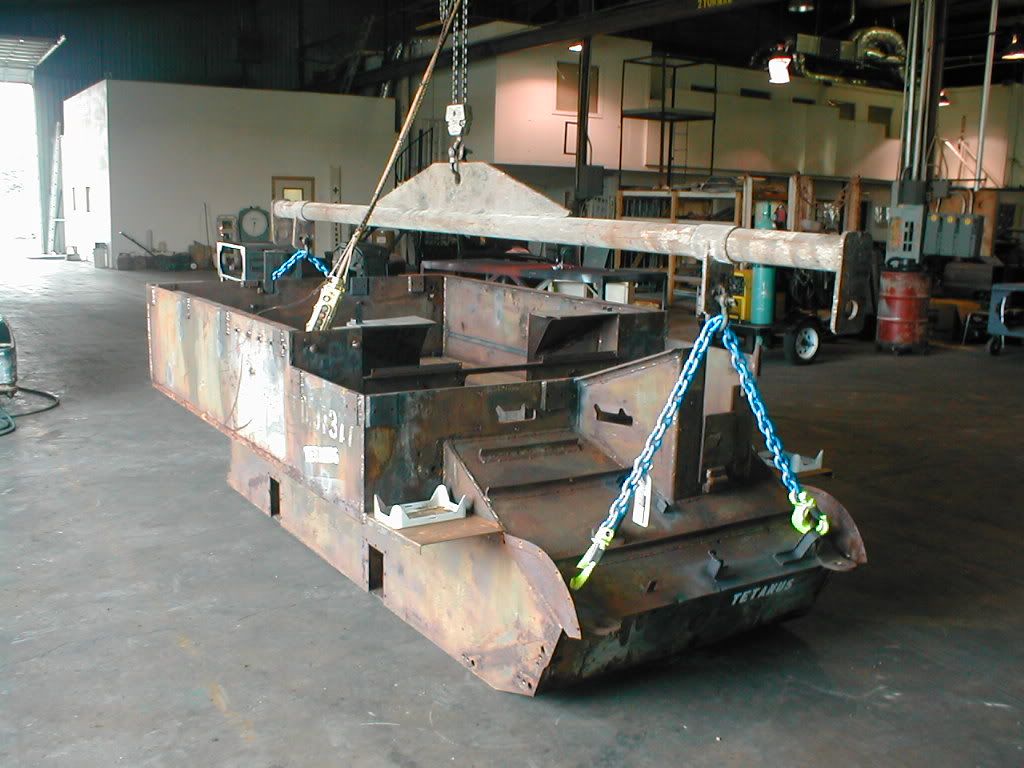  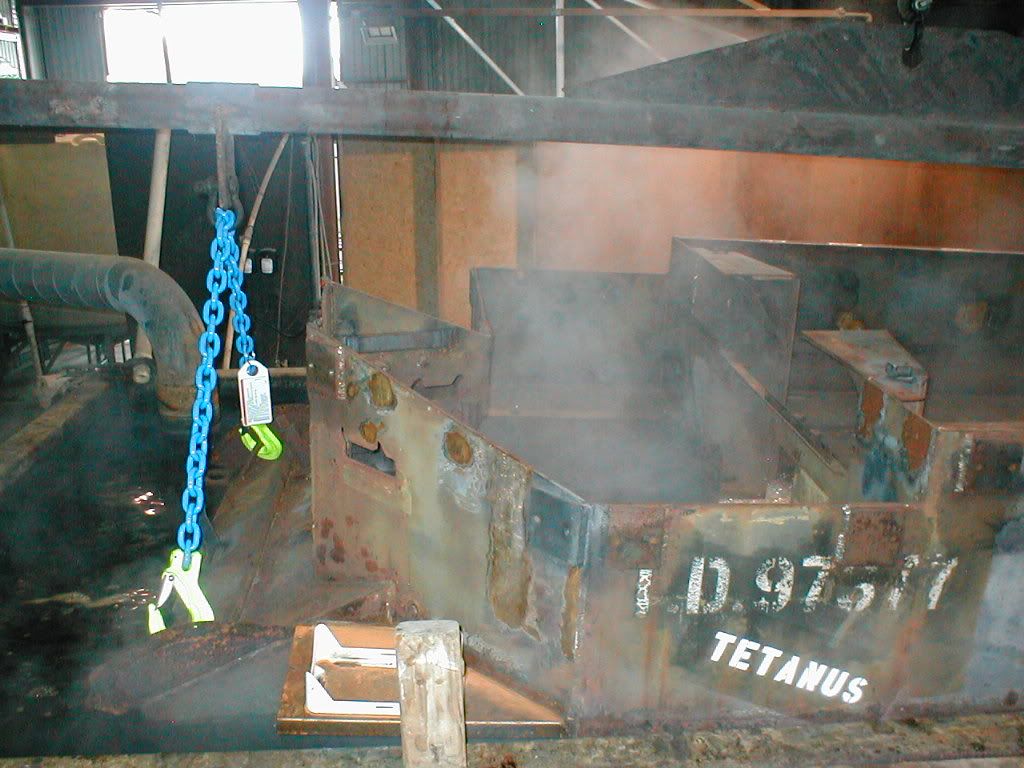 This next photo shows the hull about to go into the bath for the second time. First dip was killing the paint residue and pretreating the rust. It was then pressure washed before going in again. 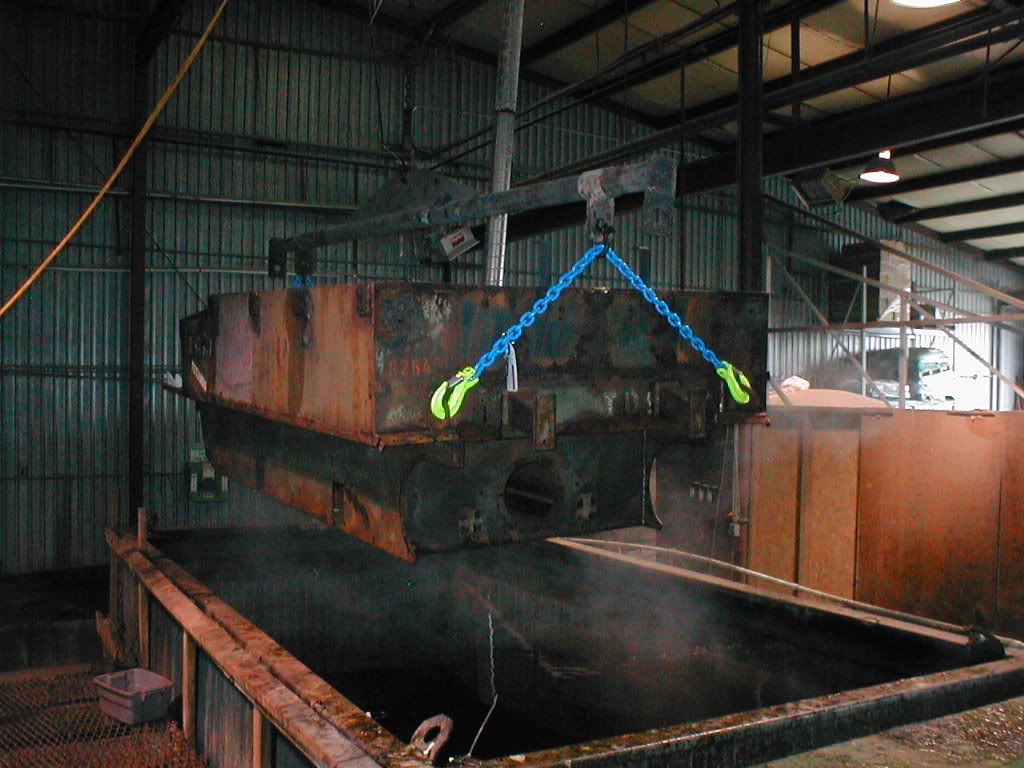 Last two photos show the hull after the second bath but prior to being pressure washed off again. It was really shiny after it was washed but none of those photos came out. 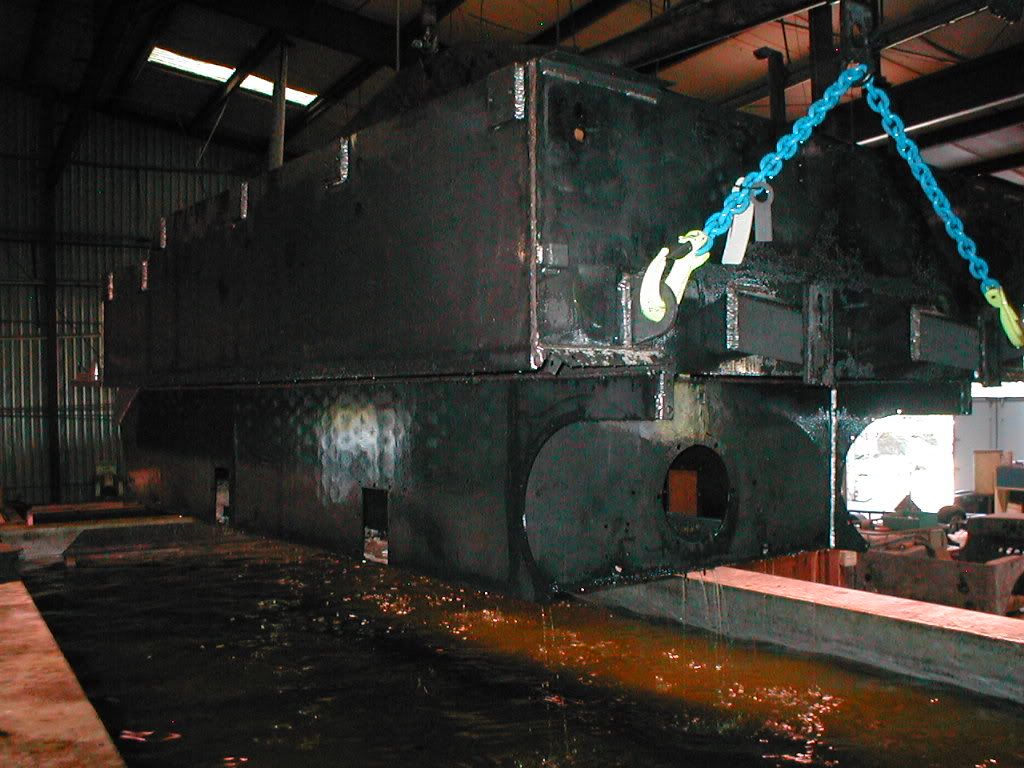 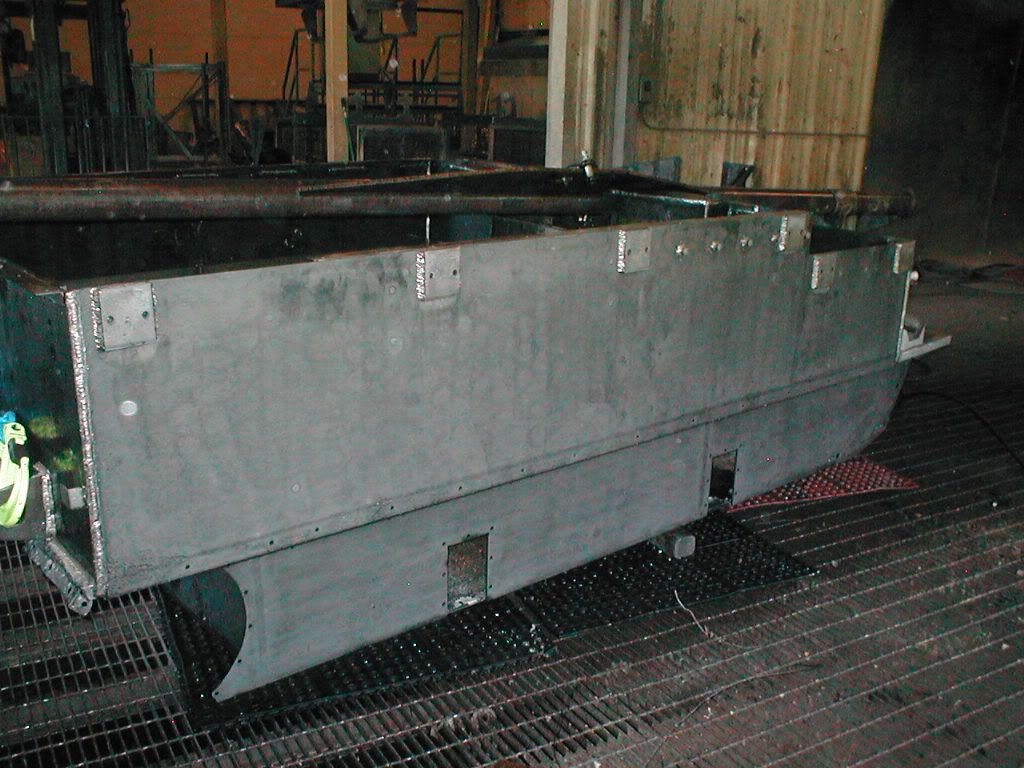
__________________
David Gordon - MVPA # 15292 '41 Willys MB British Airborne Jeep '42 Excelsior Welbike Mark I '43 BSA Folding Military Bicycle '44 Orme-Evans Airborne Trailer No. 1 Mk. II '44 Airborne 100-Gallon Water Bowser Trailer '44 Jowett Cars 4.2-Inch Towed Mortar '44 Daimler Scout Car Mark II '45 Studebaker M29C Weasel |
|
#3
|
||||
|
||||
|
Blimey Dave! Is that facility in your back garden...not many of us have that
 Also what are those chains coated with? That they come out still blue and yellow. Ron |
|
#4
|
||||
|
||||
|
I wish the place was in my back yard, but they are a 3.5 hour drive from where I live. I would have needed to trailer the hull to a sand blaster anyway so figured the extra drive time wouldn't make too much of a difference in the end. The real incentive is the facility made me a great deal. They had been dipping antique cars for years but had never done something heavy like the carrier. So it was a test for them to see if they wanted to start attracting military vehicle restoration people or not.
We were both really pleased with how the hull came out. And my cost was less than it would have been to sand blast since they made me a great deal for testing purposes. Numbers are all relevant to where you live and the time period we're talking about. Suffice to say they would now charge someone about three times what it would be for sand blasting. The process is a lot more thorough than sand blasting since it gets everywhere. And the chemicals won't eat good metal so there is nothing lost except for paint, grease and oxidation. Plus no sand residue falling out of all the little holes and channels on the vehicle. As for the chains, I'm not sure what they were coated with. I know that they were new since they were unsure of lifting the hull with what they had been using before at the shop. But the chemicals sure didn't touch them at all so likely it was a rubber coating of some type. They said the road wheels could safely be dipped since the rubber wouldn't be affected but I didn't want to risk testing them since it would have been expensive to replace them if they were wrong. Went the normal sand blasting route with all of my wheels.
__________________
David Gordon - MVPA # 15292 '41 Willys MB British Airborne Jeep '42 Excelsior Welbike Mark I '43 BSA Folding Military Bicycle '44 Orme-Evans Airborne Trailer No. 1 Mk. II '44 Airborne 100-Gallon Water Bowser Trailer '44 Jowett Cars 4.2-Inch Towed Mortar '44 Daimler Scout Car Mark II '45 Studebaker M29C Weasel |
|
#5
|
||||
|
||||
|
David,
A great restoration project. Do you have an idea of the weight of the hull in itself? I have excess to the same HC acid tanks through a family member, but he needs to know the weights... as they currently only strip classic cars and industrial paint machinary.
__________________
Alastair Lincoln, UK. Under Restoration: 1944 No2 MK2 Loyd Carrier - Tracked Towing 1944 Ford WOT6 Lorry The Loyd on Facebook |
|
#6
|
||||
|
||||
|
We added up other known item weights and worked backwards from what the total vehicle was supposed to weigh. Estimated the stripped hull at 3500 pounds. The gantry the dip place had was rated for two tons but they said it could probably hold a little more but didn't know it's true safety margin.
They didn't have a scale when it came time to testing things out but said it was easily within their normal weight limits based on having moved other vehicles around with their forklift and the gantry so I guess our initial estimates were pretty close. You'll notice in the shots that I took the bogie assembly mounting brackets off the lower hull. This was to further lighten it as well as to allow fast drainage of the chemicals due to their weight and added time it would have taken to lower and raise the hull if the liquid couldn't get in and out easier.
__________________
David Gordon - MVPA # 15292 '41 Willys MB British Airborne Jeep '42 Excelsior Welbike Mark I '43 BSA Folding Military Bicycle '44 Orme-Evans Airborne Trailer No. 1 Mk. II '44 Airborne 100-Gallon Water Bowser Trailer '44 Jowett Cars 4.2-Inch Towed Mortar '44 Daimler Scout Car Mark II '45 Studebaker M29C Weasel |
|
#7
|
||||
|
||||
|
Hello David and thanks for the pics. Chemically dipping large assemblies is of course the first choice of restoration techniques but even when I lived right in Sydney, near to a place that could do it (I was building jeeps back then) it was just too costly to have done. I wish I could afford to have the Scout hull dipped as even the sandblaster i hoped to have organised locally seems to have come to nought.
I am likely to have to carry my hull on a car trailer on a 600km round trip to Perth for sandblasting when the time comes...  Congratulations once again on a first class restoration by the way - simply awesome ! Cheers Phill
__________________
Ford GPW Jeep USMC Ambulance Willys MB Jeep Daimler Ferret Mk 1 Daimler Ferret Mk 2 Land Rover S2A Field Workshop Land Rover S3 FItted For Radio x2 Land Rover Perentie GS (SASR) International No 1 Mk 3 2.5 Ton 4x4 International No 1 Mk 4 2.5 Ton 4x4 |
 |
| Thread Tools | |
| Display Modes | |
|
|
 Similar Threads
Similar Threads
|
||||
| Thread | Thread Starter | Forum | Replies | Last Post |
| my C15 restoration | rampant rivet | The Restoration Forum | 111 | 26-12-19 14:46 |
| M38 CDN Restoration | donjunior | Post-war Military Vehicles | 1 | 08-07-13 03:25 |
| 4.5 Restoration | James Shopland | The Gun Park | 7 | 18-03-13 17:38 |
| F8 for restoration | david moore | The Softskin Forum | 32 | 21-06-05 15:47 |
| Restoration tip........ | Bob Carriere | The Restoration Forum | 3 | 09-08-03 17:50 |